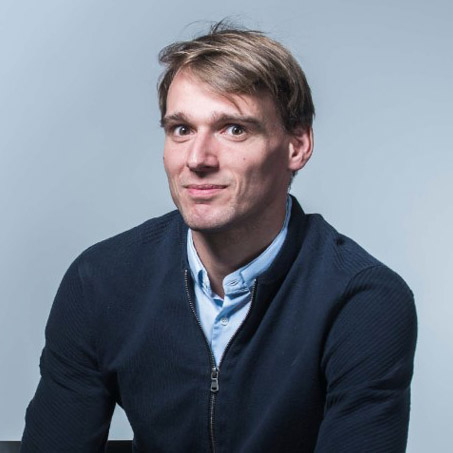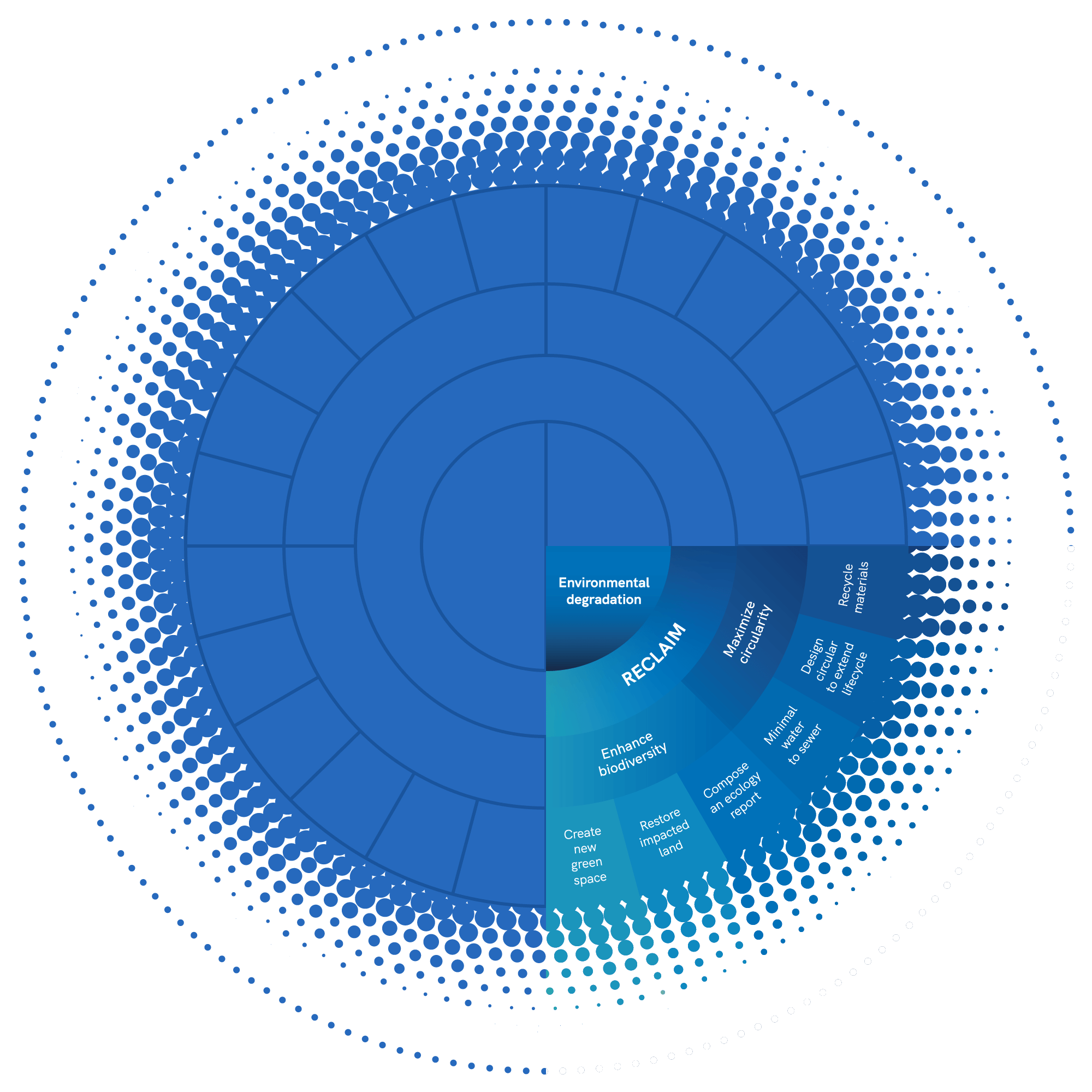
RECLAIM – ENVIRONMENTAL DEGRADATION
Renovate, do not demolish. By improving circularity, we can preserve natural habitats, enhance ecosystems, and protect diverse species from environmental harm.


ENHANCE BIODIVERSITY
Create new green space
Restore impacted land
Compose an ecology report

MAXIMIZE CIRCULARITY
Minimize water to sewer
Circular design to extend potential lifecycle
Recycle materials
Reduce demolition’s environmental impact by prioritising the reuse and recycling of non-hazardous materials, without standardising recovery as the most environmentally friendly choice.
93%
Of all acquired land was “impacted land”.
X5
34%
16
84%
2
X2,5
100 Ha
33.000.000L
By removing 49.400 m² of paved surfaces or buildings throughout our projects of the past 15 years, approximately 33.000.000 fewer litres of rainwater enters the sewer system annually. This redirected rainwater will feed local groundwater levels and contribute to the local ecosystem.
Ambitions
Value assessment for nature
Anno 2023, Revive determines what is of value to nature in every project. Nature-focused value assessments are taken into account in new masterplans, which will determine which trees or green structures will be planted to optimize biodiversity. This has been done for pipeline projects ACV (Ruisbroek, Belgium) and Cavallia (Poznan, Poland), where steps are being taken to protect biological heritage by combining old with new.
0L to sewer system
Building on our 33.000.000 litres annual saving in water to the sewer system, we are working towards the goal of 0 litres of rainwater going to the sewers. This would mean that all water is redirected to nature or used for different purposes inside our buildings or onsite.
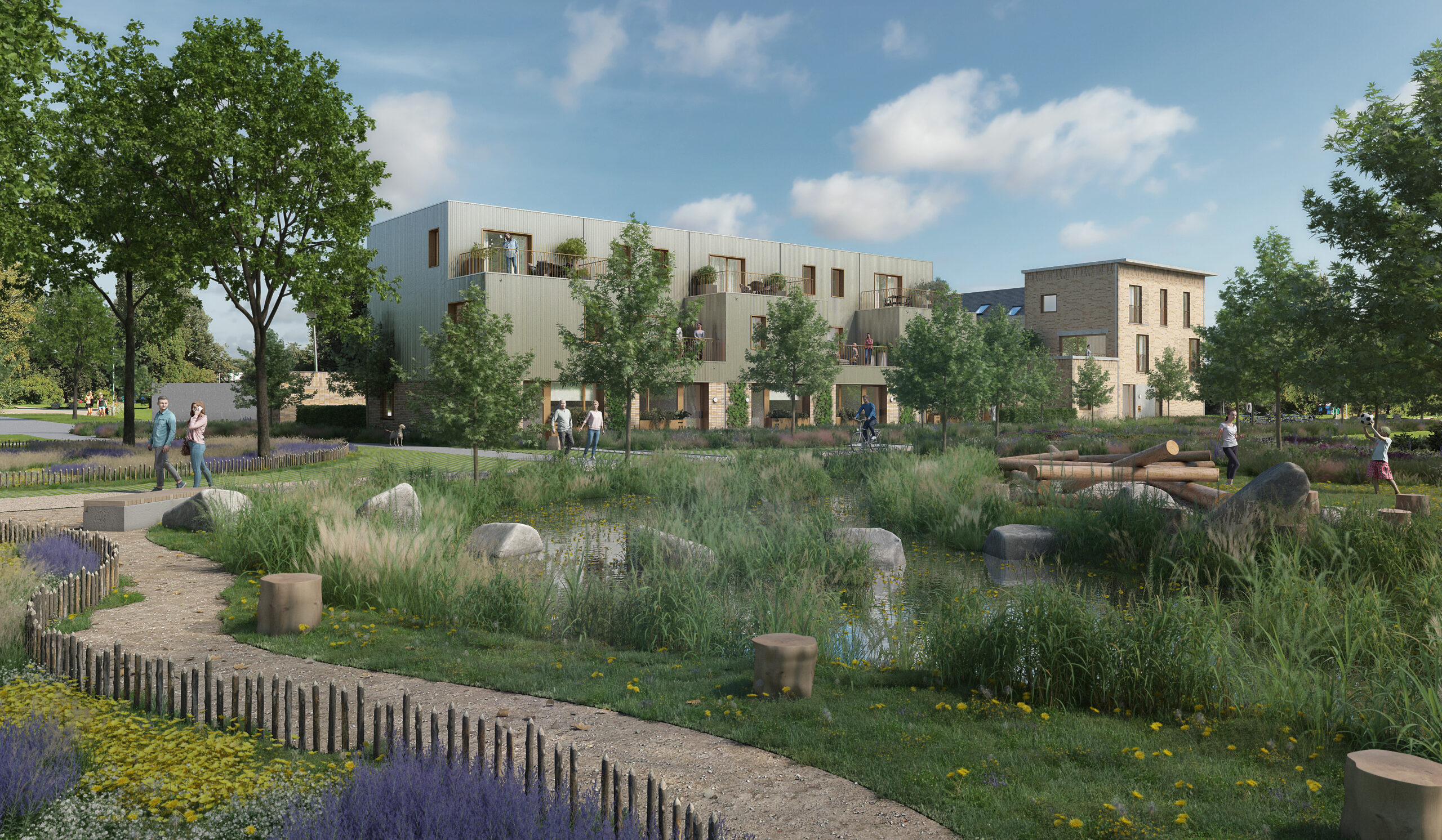
Cases
WASCO – Minerve
1.000 trees urban forest - Saffrou
Watt The Firms - Ghent
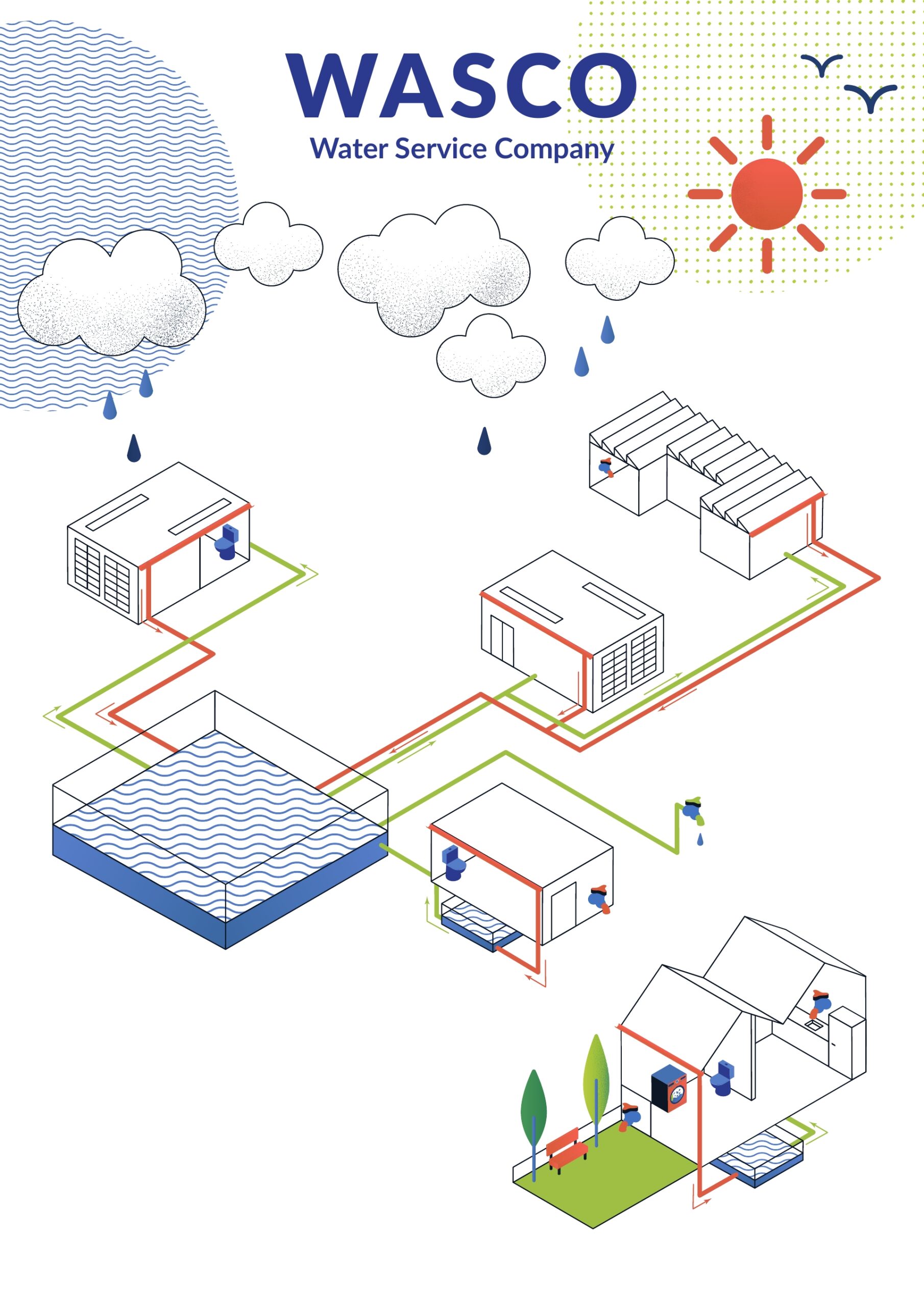
WASCO – Minerve
Revive project Minerve (Edegem) is an example project in biodiversity. In addition to water infiltration Revive also integrated a WASCO at the Minerve site, recovering rainwater from neighbouring rooftops, guaranteeing that drinking water will never have to be used for toilet flushing. In addition, stormwater is redistributed back to industrial neighbours and there will be a tapping point thatmunicipalities can use. The WASCO also supply water for the sites green building Ata Kando and the communal gardens. Revive currently estimate that 18 million litres of water will be retained per year, of which 12 million litres are reused annually by the WASCO at the current usage.
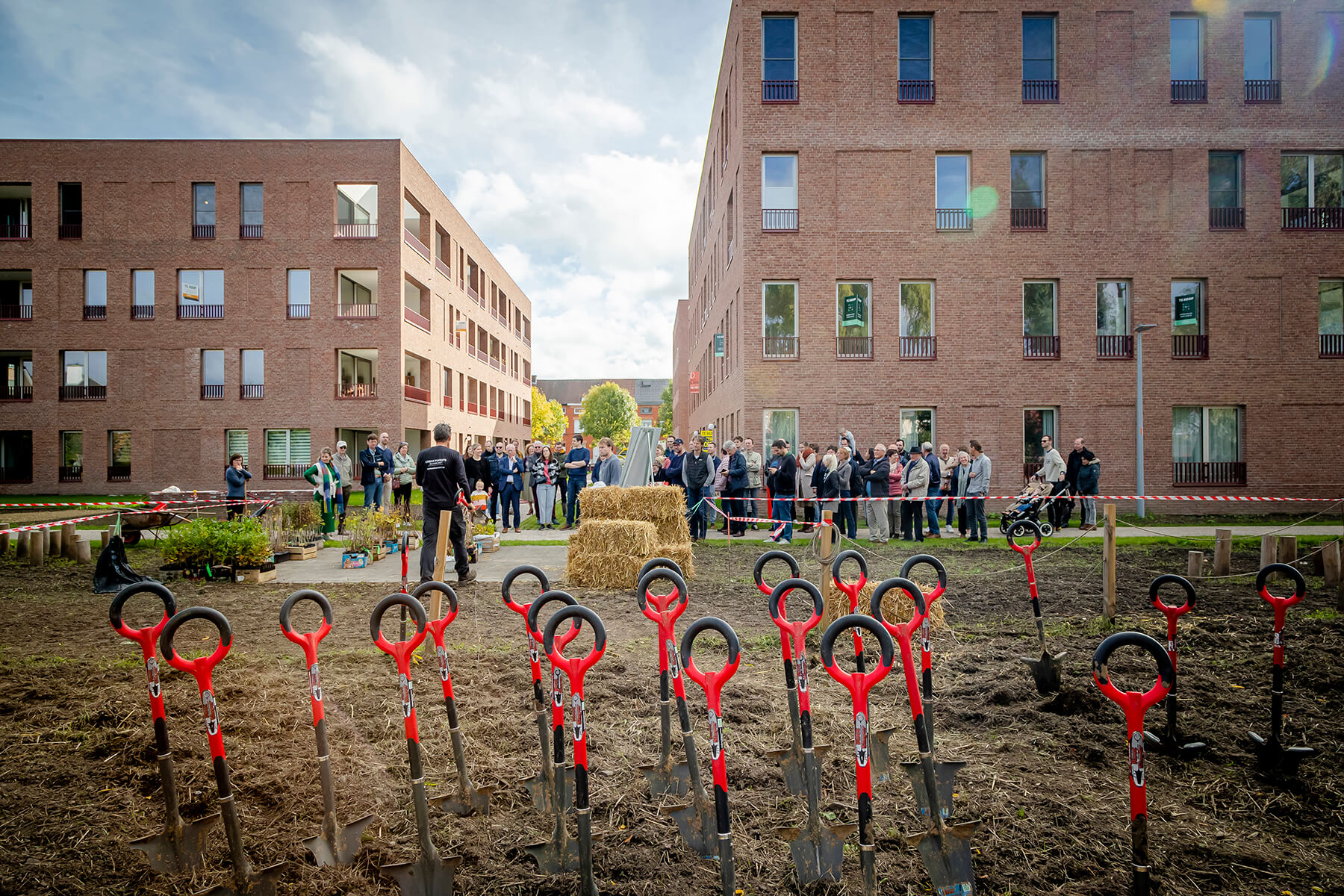
1.000 trees urban forest – Saffrou
In October 2022 Revive celebrated the opening of the first phase in its Saffrou (Oudenaarde, Belgium) project by planting the first tiny urban forest in Flanders, together with the site’s residents and the mayor. This small urban forest comprised of about a thousand young trees, all native species, was planted according to the Japanese Miyawaki method in collaboration with the experts of Urban Forests. It is a 100% organic way to make a brand-new forest blossom rapidly in the middle of the city, without the use of chemicals.
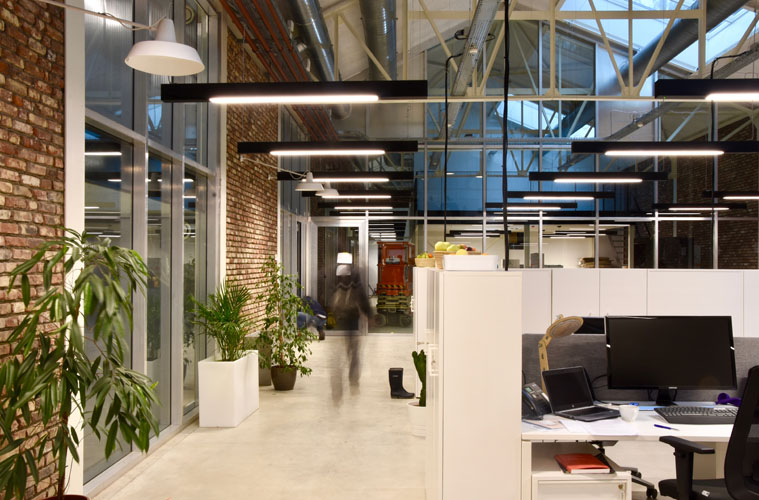
Watt The Firms – Ghent
In 2016 Revive redeveloped the old Elektrion site into the mixed use WATT project. Once known as an oil production site and the most polluted brownfield in Ghent, the project now combines a residential area and WATT THE FIRMS, an inspirational business complex and creative hotspot, also housing the Revive HQ.
The WATT project raised the bar in terms of technology and sustainability, featuring a geothermal network, a dozen large rainwater tanks, bio-tech air treatment and intensive reuse of building materials.

